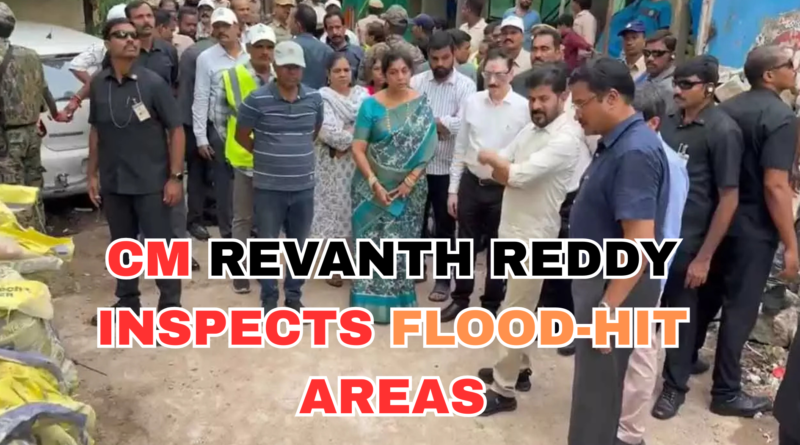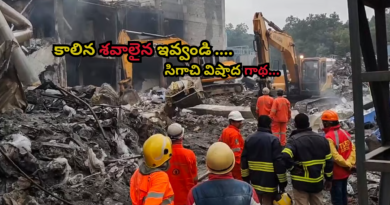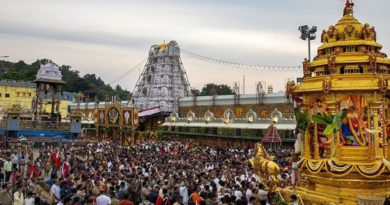CM REVANTH REDDY INSPECTS FLOOD-HIT AREAS
Hyderabad witnessed yet another reminder of its monsoon vulnerabilities as torrential rains battered the city this week, leaving several key areas submerged in knee-deep water. In response, Chief Minister A. Revanth Reddy conducted an unannounced inspection of flood-hit localities, focusing particularly on Ameerpet’s Maitrivanam and Buddha Nagar two zones that have long struggled with chronic waterlogging during heavy downpours.
The CM, accompanied by senior officials from the Greater Hyderabad Municipal Corporation (GHMC), Hyderabad Road Development Authority (HYDRAA), Hyderabad Metropolitan Water Supply and Sewerage Board (HMWS&SB), and the Municipal Administration and Urban Development (MAUD) department, personally reviewed the extent of flooding and spoke with affected residents. The impromptu visit caught local officers off guard, but it also brought first-hand clarity to the structural shortcomings causing recurring urban floods.
Spotlight on Drainage Deficiencies
During the inspection, Mr. Reddy highlighted a recurring issue: improperly graded stormwater drains. In several stretches of Maitrivanam, drains were found to slope against the natural water flow, effectively trapping rainwater instead of channeling it away. “We cannot afford the same mistakes year after year,” the CM remarked, instructing the engineering teams to redesign such drains with proper gradients and larger capacities to withstand extreme rainfall events.
The CM also flagged the problem of encroachments and illegal parking along major drainage channels. Vehicles parked over drain inlets were blocking water passage, exacerbating waterlogging. Mr. Reddy directed the GHMC to strictly enforce no-parking zones around key drainage points, warning that violators would face penalties and towing.
Micro-Catchment Mapping for Flood Management
In what could mark a shift toward data-driven urban flood mitigation, the Chief Minister ordered a comprehensive micro-catchment mapping of Hyderabad. This involves identifying small, localized areas that naturally collect and channel rainwater, which often overflow during intense showers. The CM noted that without understanding these micro-zones, city planners cannot develop targeted solutions.
“Flood management cannot rely only on big infrastructure projects. We need granular data to know exactly where the water comes from, how it flows, and where it gets stuck. Only then can we engineer long-term resilience,” Mr. Reddy told officials.
The proposed study will be carried out jointly by the GHMC and hydrological experts, with the aim of preparing a Flood Vulnerability Index for each ward. This index would guide both preventive measures before the monsoon and quick-response actions during emergencies.
Public Safety and Accountability
Beyond technical interventions, the CM emphasized transparency and public safety. He instructed MAUD officials to establish a central helpline for flood-related grievances, ensuring that citizens can quickly report waterlogging, damaged drains, or blocked culverts. Real-time updates on flood-prone spots, to be shared via the GHMC’s mobile app, will help commuters avoid risky areas during heavy rainfall.
Mr. Reddy also called for a public accountability mechanism. Every drainage and flood-prevention project will now have its progress monitored on a dashboard accessible to both government officers and the public. This, he said, would help curb delays and ensure quality execution.
Residents’ Voices Heard
During his walk through Buddha Nagar, the CM interacted with residents who expressed frustration over repeated monsoon disruptions. Several shop owners claimed they suffer economic losses each year when rainwater enters their premises. One resident told the CM that even light rain leads to flooding because the drains are clogged with debris and silt.
Acknowledging these grievances, Mr. Reddy instructed immediate desilting operations for all major drains before the next forecasted rain spell. He also hinted at potential amendments to urban construction rules, requiring new commercial complexes to integrate rainwater harvesting and onsite stormwater management systems.
A Long-Term Commitment
While Hyderabad’s rapid urbanization has often outpaced its infrastructure upgrades, the CM’s directives signal a move toward sustainable flood resilience. By combining engineering fixes, strict enforcement, and scientific mapping of micro-catchments, the government aims to break the cycle of seasonal flooding that has plagued the city for years.
“This is not just about clearing water today; it’s about ensuring that ten years from now, these streets do not face the same fate,” Mr. Reddy concluded, urging all departments to work in close coordination before the next round of monsoon showers.




